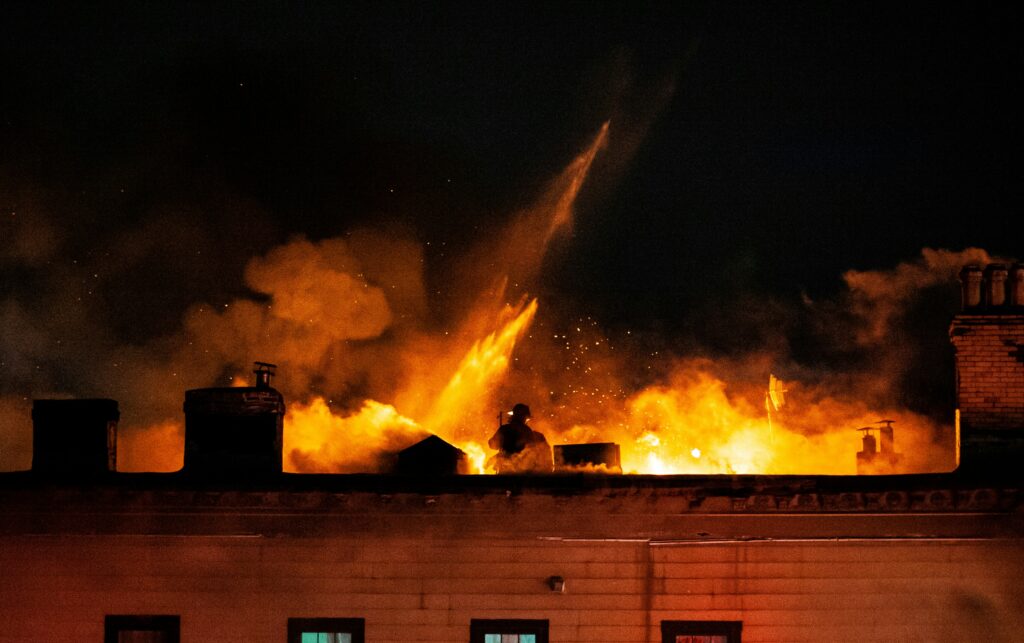Your carefully curated stockpile is a death trap. Those neatly stacked cans, that pristine first aid kit, the bug-out bag that’s never left your closet—they’re giving you a false sense of security that will get you killed when the streets go dark.

the urban prepping trap that gets people killed
Hurricane Sandy proved a brutal truth—72% of New Yorkers who thought they were prepared ran out of essentials within 48 hours. The ones who survived weren’t the ones with the most supplies. They were the ones whose supplies could adapt.
Static prepping is the silent killer. It’s watching your water filters expire two days into a blackout. It’s realizing your “hidden” food cache is the first place looters look. It’s freezing when you should act because you’ve never actually practiced under stress.

the #1 mistake: static preparedness
Your stockpile isn’t a museum exhibit. Those MREs from 2018 aren’t vintage collectibles—they’re bacterial time bombs. The average urban prepper makes three fatal assumptions: that their supplies will stay secure, that their skills won’t decay, and that disaster will follow their script.
Real urban collapse doesn’t care about your spreadsheet. During the 2020 Minneapolis riots, preppers with garage-only storage watched their gear burn while those with dispersed caches traded for protection. Your single-location stockpile isn’t preparation—it’s a liability.
how to fix it: dynamic urban prepping
the rotation protocol
Food isn’t a “set it and forget it” insurance policy. Implement a first-in-first-out system where you eat and replace 10% of your stockpile monthly. Better yet—hold monthly “crisis cooking” nights where you prepare three meals using only your emergency supplies. You’ll discover the expired spices and dead batteries before they matter.
Water needs attention most preppers ignore. That fancy filtration system? Test it with actual gutter runoff quarterly. Those stored jugs? Rotate them through your plants to hide usage patterns while keeping water fresh.
the dispersal strategy
Three locations minimum—home, work, and somewhere unexpected. That storage unit across town? Obvious. The locker at your gym? Better. The hollow space behind your office’s drop ceiling? Now we’re talking.
The gray man distribution method means carrying survival essentials disguised as everyday items. A modified briefcase with hidden compartments beats a tactical backpack when police are stopping “suspicious” carriers.
the mobility upgrade
Your bug-out plan is worthless if you’ve never tested it during rush hour with a sprained ankle. Quarterly drills should include:
– Different transportation methods (bike, foot, public transit)
– Alternate routes accounting for new construction
– Carrying only what you can manage while injured

stress-testing your preps
the apartment lockdown challenge
Go seven days using only your supplies. No cheating. That means no secret grocery runs, no “just this once” takeout. Document every frustration—the can opener you forgot, the neighbor who noticed your generator, the medication you couldn’t properly store.
the blackout simulation
72 hours without power or running water. Actually purify water from your toilet tank (yes, really). Suture a banana. Start a fire on your balcony without alerting the whole building.
the social breakdown drill
Try bartering for essentials using only your preps. That case of ramen won’t seem so valuable when you need antibiotics. Notice which neighbors have skills worth trading for—and which will become liabilities when they get desperate.
worst-case scenario: how this mistake kills
Day one starts with complacency. Day three brings the realization that your “hidden” safe is the first place looters look. By day seven, you’re drinking contaminated water because you never actually tested your filters with real urban runoff.
The skill decay effect hits harder than hunger. That CPR certification from two years ago? Useless when your hands shake during an actual emergency. The self-defense class you took? Forgotten when faced with real violence.
Your neighborhood watches. That generator you proudly installed makes you Target #1. The prepper Facebook posts you shared become a roadmap for desperate neighbors. During the Detroit riots, organized groups systematically hit known stockpile locations.
real-world examples that prove it works
Tokyo earthquake preppers survive because they treat supplies like milk—constantly rotated, never stockpiled past expiration. Miami hurricane veterans keep caches in fishing boats and abandoned construction sites, never just at home.
The Buenos Aires economic collapse taught a brutal lesson—the people who survived were the ones who’d practiced bartering before it mattered. Their “useless” drills became lifelines when pesos turned to confetti.
your 30-day correction plan
Week one is brutal honesty. Inventory everything. Toss anything expired. Admit what you’ve never actually tested. Week two builds dispersal—establish three cache locations using gray man principles. Week three tests mobility with a surprise drill. Week four runs a mini lockdown.
The survivors aren’t the ones with the most gear. They’re the ones whose preps evolve. Your stockpile should look different every month—smaller but smarter, lighter but more adaptable.
Disaster doesn’t wait for you to be ready. But tomorrow’s crisis will find you either prepared—or another cautionary tale. The clock’s ticking. Your move.
